Every once in a while, a product comes along that captures my heart. It’s something that I don’t need, but it quickly becomes something that I desperately want. My life is rooted in quantitative analysis and problem solving, so it’s rare that I act on emotions in any aspect of my life, including making irrational purchases of a product I don’t need.

However, that’s exactly what happened when I saw a press release from Canadian HiFi manufacturer NAD Electronics for the NAD C3050 LE (C3050 LE). The amplifier in the press release looked so beautiful, with its marriage of wood and metal, however I assumed it was just a look back at their history as they celebrate 50 years of success.
As I read more into it, I realized that these images were not from the past, but rather for a modern integrated amplifier that would be available in limited quantities at first, and then later as a regular production item! Without looking much at the specs (extremely unusual for me!), I contacted Lenbrook (NAD’s parent company) in China and placed an order for one.
Background
The C3050 LE takes its design cues from the NAD C3030 (C3030), the predecessor to the famous NAD 3020 (the amplifier that really put NAD on the Hifi map). The C3030 was taller and heavier to accommodate the traditional Class A/B amplifier technology, and produced a paltry (albeit high for its time) 30 watts per channel.
The C3050 LE is a thoroughly modern take on the C3030. Gone is the traditional amplifier topology, being replaced by HypeX’s UcD modules that provide excellent sound quality, high efficiency, low power consumption, and very, very light weight. The HypeX UcD 102 modules appear to be modified or custom designed for NAD to produce a rated 100 watts per channel into 8 ohms in this specification (vs. 60 watts per channel in their typical OEM specification).
The modern leap continues with the C3050 LE’s Dirac Live Room Correction and streaming capabilities, as it includes NAD’s excellent BluOS connectivity platform. This is a soup to nuts platform that includes everything from aptX Bluetooth, Apple AirPlay2, Roon Ready, Chromecast, Bluesound’s own ecosystem, and many more mainstream streaming (20+) services.
It took several months from when the order was placed to when the C3050 LE finally shipped, but the wait was certainly worth it. In this review, I’ll share my experiences in setting up and using the amplifier over the past few weeks.
Unboxing
The outer box for the C3050 LE is adorned with 50the anniversary red squares. I don’t recall seeing this type of branding on previous NAD products so it may be limited to this model, or perhaps for products shipping this year.
Compared to the NAD M33, the unboxing for the C3050 LE was a bit anticlimactic. There’s no double boxing here, however the amplifier was packaged well with good cushioning and a well designed box interior.
The way the remote control and accessories box sits shows that some real care went into the design of the box, to minimize waste and to provide a more custom tailored feel to the first impression of the amplifier.
The whole amplifier is wrapped in plastic, with an additional thin textile material protector on the front panel of the amplifier. It again gives the impression that NAD is serious about minimizing waste (and likely reducing costs) as there’s nothing excessive in the packaging. The amplifier itself is very light at 10 kg and was easy to remove from the box. I didn’t even have to turn the box over to let it slide out, it’s light enough to be pulled out from the top.
NAD includes two power cords for different regions which is a nice touch, and also includes a microphone and USB connector for Dirac Live, plus two antennas for the Bluetooth and Wifi connections.
Build quality
People coming from Class A or Class A/B amplifiers always equated weight to build quality and performance. The heavier the amplifier, the better it typically performed, but that was in the past. With modern Class D amplifiers, weight can no longer be a judge of an amplifier’s potential.
The C3050 LE exudes good build quality in that everything feels tight and well put together. However, besides the real wood enclosure, there are no exotic metals here. There’s no thick plates of aluminum, no metal knobs, and no premium connections for the various connectivity options on the back panel. At this price point, I find this totally acceptable and reasonable.
I’m obsessive with volume knobs and how they feel. The best volume knob I’ve used is on the Creek EVO100A amplifier. It’s made from a solid chunk of aluminum, and the potentiometer used is silky smooth; you can precisely adjust the volume with a pinky finger. The Creek exudes luxury and high build quality.

The worst volume knob I’ve experienced is on my Cambridge Audio EVO 150. It’s far too large and feels like turning a large diameter straw in a glass of soda. There’s little to no resistance, no feel, and worse, the digital changes on the screen don’t always match the movement of the dial. It’s shocking that such a good amplifier is marred with such a poorly designed volume knob.
The C3050 LE sits somewhere in the middle. It has a plastic knob so it’ll never feel like the Creek, but it’s a really, really good plastic, that if you squint just right, looks a bit like metal. NAD even chamfered the edge to make it look metal. Unfortunately, just like with my M33, the potentiometer was installed slightly at an offset angle, making the volume knob move in an oblong shape versus the cutout. A bit of force in the opposite direction lined it up perfectly.
All the knobs on the front have good tactile feel with minimal slack. Some buttons look like they’d have more push and pull movement, but are instead simple digital switches. I’m perfectly ok with this as I appreciate the balance NAD landed at with app control versus tactile control.
Appearance
As noted in the introduction, I’m a data driven person and I never buy something without looking at quantitative measurements and test data. Well, the C3050 LE purchase was different. It’s design is so achingly beautiful that I just had to have it. I put my faith in NAD and hoped that they’d deliver a good product that will ultimately test well.
I started my Hifi journey with an NAD T750 AV receiver and then moved up to a NAD C162 pre-amp and two NAD C272 amplifiers. The look and feel of these units was pretty basic. Dark grey plastic front panels, plastic buttons and dials, steel cases and minimalist styling. I didn’t mind it because NAD seemed to always under promise and overdeliver where it counted, in power output and sound quality.
The C3050 LE’s VU meters and combination of wood and black steel work so well together that I can’t imagine this is not a design renaissance of sorts. I anticipate we’ll see many more NAD products following this vintage design language in the future. Indeed, I just saw a review for a new Yamaha amplifier that recalls their past design language to great effect.
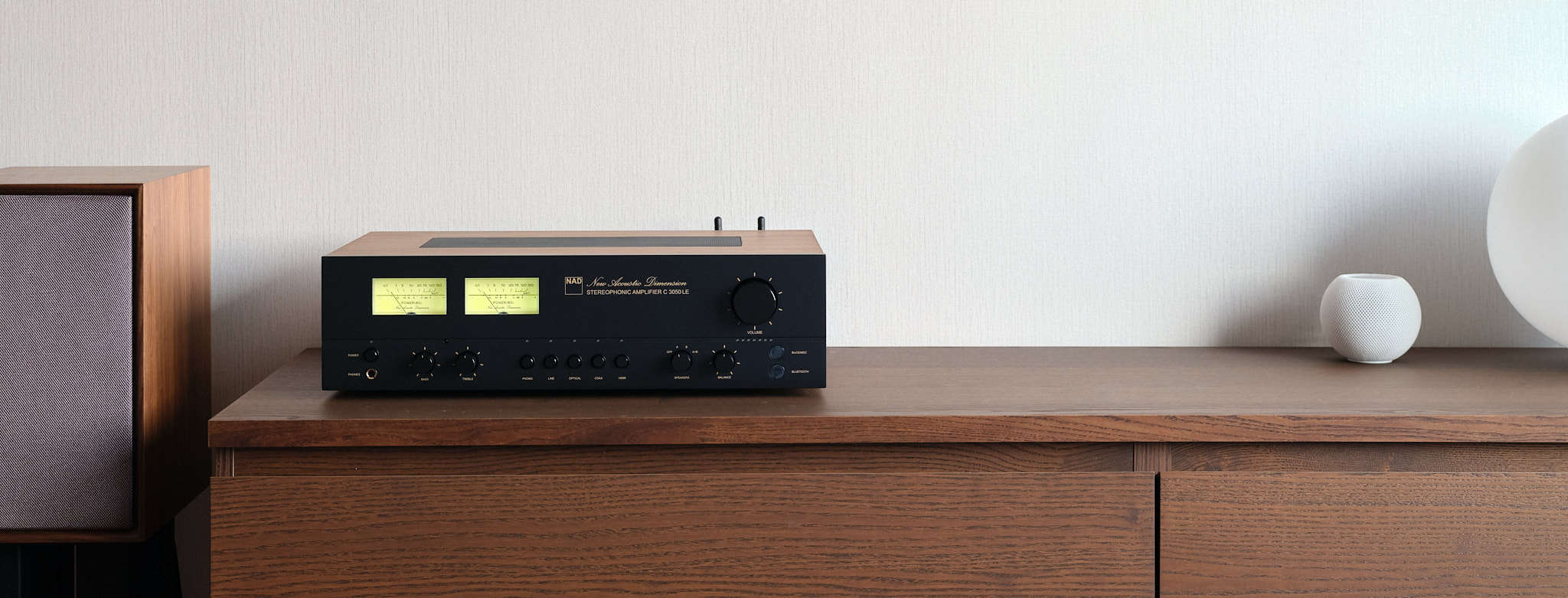
Paired with a set of Wharfedale Denton 80 speakers, the C3050 LE transports me to a time before I was born. There’s something magical about streaming my favourite music using a high technology tool like an iPhone to a device that looks like it’s from the 1970’s, but sounds like something from the 2020’s. I’ll save the Wharfedale discussion for another post, because these little guys really deserve some recognition; it’s astonishing that a pair cost only USD 400!
In my minimalist and modern decor, the C3050 LE fits in perfectly. The wood grain is lighter than it appears in NAD’s official press images, but matches very well with the recent trend of vintage gear. I would say it’s a few shades lighter than typical walnut, but darker than maple. Regardless, matching wood should not be a concern, since nature has many different colours and our rooms should embrace the variety in their full glory.
A key selling point for this amplifier are the VU meters, and the deliver. Unlike the M33 where the VU Meters are slow to react and get quickly turned off, the C3050 LE VU Meters are responsive and exactly what you’d want from their operation. There are two modes, one which shows output level in watts (default) and the other to show input levels in db. I find the latter useless as most music these days is so compressed that the VU meters would be hovering at 0db the whole time.
I should note however that I did find a bug in the VU meters. They don’t appear to be scaled correctly. When fed a variety of signals, my C3050 LE shows the following:
| Input Signal | VU Meter Actual Reading |
|---|---|
| 0 db | +3 db |
| -3 db | +1.5 db |
| -6 db | 0 db |
| -9 db | -1.5 db |
I’ve reported this bug to NAD and I’m waiting to hear back from them if this is specific to my amplifier or if it’s something broader that can be addressed in a firmware fix.
Setup
If you already have a Bluesound device in your home (such as the M33), the setup cannot possibly be easier. The C3050 LE was immediately found in the BluOS app and I was up and running in less than three minutes. If you don’t have a Bluseound device in your home, setup is still very easy and you can be up and running in less than 10 minutes.
The same cannot be said of the clunky implementation of Dirac Live. Even though I went through the same thing with the M33, it had been more than two years and I had forgotten how to access the Dirac Live setup procedure.
To see anything related to Dirac Live show up in BluOS, you need to actually download the Dirac Live software on your own and then run Dirac Live’s setup procedure; once you’ve completed that process, Dirac Live will show up in BluOS. I find this very counterintuitive.
NAD should put a link in BluOS when no Dirac Live has been setup so that people know what to do. For a while, I thought my unit was somehow missing the Dirac Live functionality. I had to google the issue to figure out the correct procedure to get Dirac Live to show up in BluOS.
All other aspects of the amplifier were easy to setup and use. I would suggest setting the LED brightness to “Off” so that you’re not blinded by the rather intense Volume setting LEDs. I should note another potential bug here. For the LED setting, I found some behaviour that didn’t seem intentional when adjusted via the BluOS app:
Normal: All LED are bright = Correct function
Dim: Only the power LED dims, all other LED remains bright = Incorrect function
Off: All LED are off = Correct function
Finally, the speaker terminals have small caps in them, so if you want to use banana plugs, you’ll need to remove those small caps. At least two of the caps in my C3050 LE were stuck quite tight. Please remember that the terminal knobs are plastic so use caution when removing the small caps; it’s easy to damage the plastic knob surrounding it. A very, very thin piece of wood worked for mine.
Sound quality
The C3050 LE, for all intents and purposes, sounds transparent to the music. I won’t include subjective opinions, since they’re highly variable and require extensive and proper testing rigour to make them repeatable and of value. Instead, I’ll focus on the measurements done by others which support my initial view that the C3050 LE appears to be designed to remain faithful to the production, by not adding or subtracting anything from the sound.
The C3050 LE utilizes a modern Class D topology for its amplification from HypeX. However, the particular implementation NAD chose, HypeX’s UcD, is quite old. Therefore, we won’t see state of the art measurements, but we will find that any distortion or noise should be inaudible under typical conditions.
For NAD to provide us with so many features in one box, we have to expect some penalty in SNR (Signal to Noise Ratio) versus the reference HypeX UcD design. Adding Dirac Live for example would require changes to the gain structure to provide sufficient headroom when Dirac Live needs to boost some frequencies; this would necessarily negatively impact the SNR by a few db.
Cramming a pre-amp, BluOS, all the connectivity options, plus the HypeX amplifier modules and a power supply into this small box come at some cost. Overall, NAD seems to have balanced things well as most measured issues are close to the limit of human audibility, especially when used in typical homes. Hiss is non-existent at any volume level, which is one of the best benefits of the modern Class-D HypeX/Purifi technology.
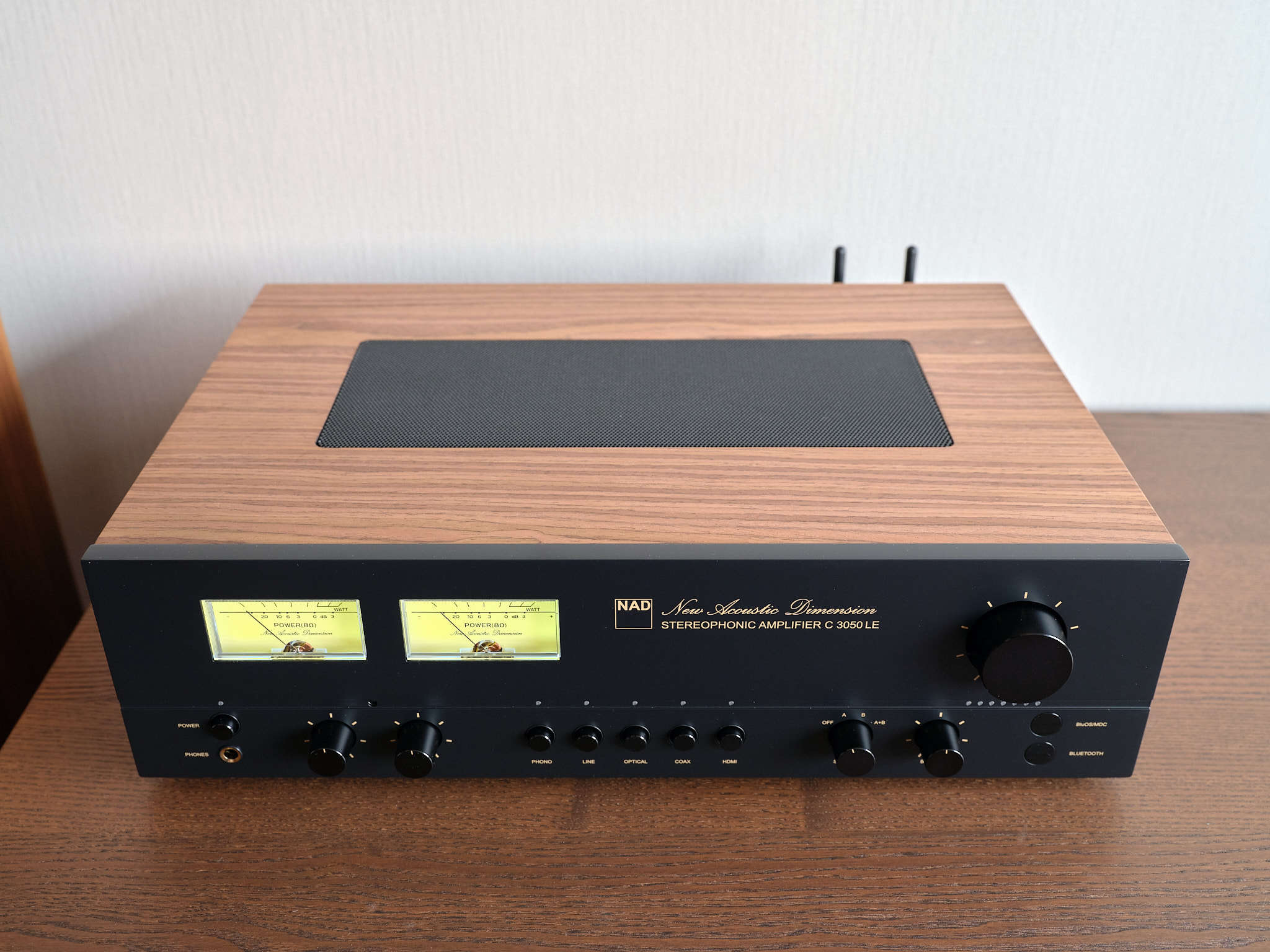
The extremely useful and exhaustive measurements provided by SoundStage Network bear this out. However, I should note a few areas that the C3050 LE disappoints or falls short of specifications (at least in the example SoundStage tested).
The first area is specified power output. NAD specifies 100w/channel into 8 ohms at 0.03% THD. SoundStage measured their amplifier at 92w/channel into that specified distortion. A few watts isn’t going to make any difference, but it’s a bit disappointing for a company that built it’s 50 year history and reputation on what NAD calls “Full Disclosure Power”. All of my other NAD products exceed specifications, sometimes by large margins.
We listen to most music with just a few watts of power, so SoundStage wisely provides distortion and noise information for when a 0db signal is applied with 10w of output. In those situations, we can see some harmonics showing up at -85db. Not state of the art (the M33 for example has harmonics showing up much lower at -105db under similar conditions), but inaudible to most people in typical listening environments.
Another area where the C3050 LE disappoints in regards to measurements is in the intermodulation distortion test. There are a number of distortion spikes throughout the audible band with most being below -100db. Likely inaudible, but I would have liked to see a better result here.
In real life usage, none of the above shortcomings matter. The noise floor of most homes is high enough that makes any audible distortion -85db below the signal nearly impossible to discern. Furthermore, the convenience of all the streaming and connectivity options, along with the efficiency of the Class D amplification, makes the slight tradeoffs in measurements more than worth it.
Never miss a post again, please subscribe to our no-spam mailing list
Power
After having experienced high power amplifiers, I vowed to never buy an amplifier again without at least a measurable and repeatable 150w/channel of continuous power into 8 ohms across the full 20Hz to 20KHz audible band. Ideally, I’d like to see that power double into 4 ohms and under dynamic bursts of sound.
My current NAD M33 meets this requirement, as did my previous NAD C272 and NAD C390DD. My Cambridge Audio Evo 150 does as well, while the Creek Evo 100 is just shy of this target. It’s therefore an anomaly that I’d buy a 100w/channel amplifier in 2023. It’s also disingenuous because I targeted the C3050 LE to be used with bookshelf speakers that are lower in sensitivity than floor-standing speakers used in my larger rooms.
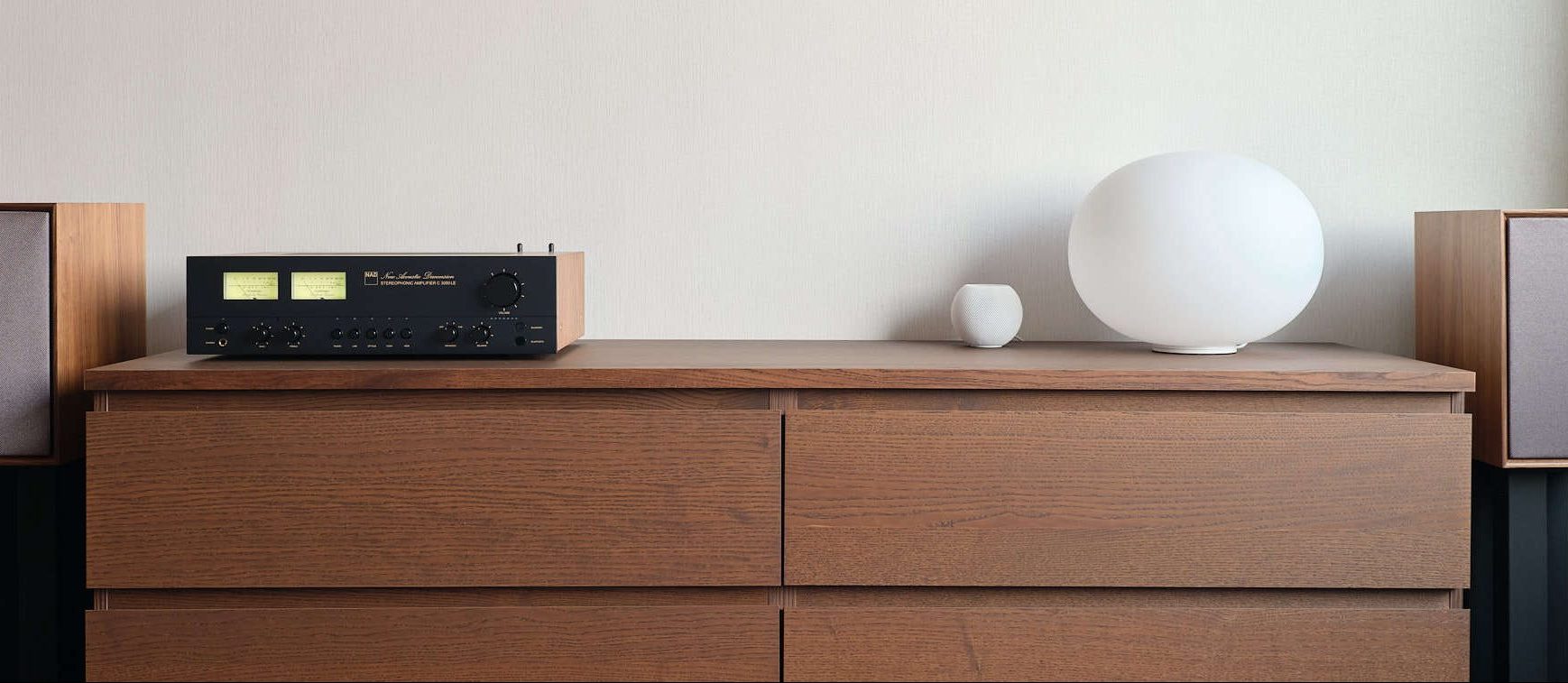
I have two trains of thought here. The C3050 LE is supposed to be a modern interpretation of the C3030. That amplifier had only 30w/channel so the new model coming in at 100w/channel is already well above the design brief. The other train of thought is that the power is a bit on the low side, and I would have liked to see 150w/channel at this price point.
The test results from SoundStage Network show that the amplifier is capable of 158w into 4 ohms (typical speaker load) at 0.03% THD and 246w into 4 ohms under dynamic music simulation. For most rooms, this will be sufficient, but I could start to hear the music take on a hard edge with my 86db sensitivity Wharfedale bookshelf speakers when played at very high levels.
Part of this could be from the amplifier clipping, and part could be from the speakers themselves being driven beyond their capability. I think the C3050 LE should be paired with high efficiency speakers to get the most out of the package. For smaller rooms or apartments, the power output is more than sufficient, especially if paired with >90db sensitivity speakers.
Connectivity
NAD has always had a great pulse of their customer base. They introduced features early in their 2-channel offerings that many of their competitors have yet to implement several years later. Connectivity like HDMI ARC, aptX Bluetooth, Airplay2, the various optical connections and the excellent BluOS which works over Wifi or Ethernet, all work seamlessly together to provide exceptional flexibility. The only thing missing is a USB connection, but quite frankly, I haven’t found a need for this given all the other options BluOS provides.
Even though BluOS works very, very well and is easy and intuitive to use, the reality is that I use Airplay2 (from my computer and mobile devices) and HDMI (from the TV) for 90% of my listening; they’re just so convenient! Bluesound has announced a refreshed app is on the way, so we’ll see if that shifts my preference the other way.
I should also mention MDC2, NAD’s innovation that allows you to add updated “modules” or cards as technology evolves. There’s been some debate how useful this feature really is, but I can attest to its potential. When I owned the NAD C390DD, I was able to add an updated BluOS MDC card to bring the amplifier into the modern world. Most manufacturers would have required buying a whole new amplifier; I was able to update my C390DD by spending a fraction of the price of a new amplifier. The C3050 LE includes one MDC2 slot which is already occupied with the current BluOS/Dirac Live MDC2 card.
Ease of use
I would never buy an amplifier without at least a volume knob; the C3050 LE gives not only a volume knob, but knobs for balance and speaker output selection and buttons for source selection and power. There’s nothing more intuitive or easy to use as labeled buttons and knobs.
I love how the NAD engineers found a way to balance app control with the tactile knobs and buttons experience. I really hope that this is a new beginning of this style of interface, where modern and tactile come together seamlessly. I can’t say that I prefer this over the M33’s touch screen interface (also an excellent implementation by NAD), but it’s certainly easier to get up and running and perfectly executed for the C3050 LE’s design brief.
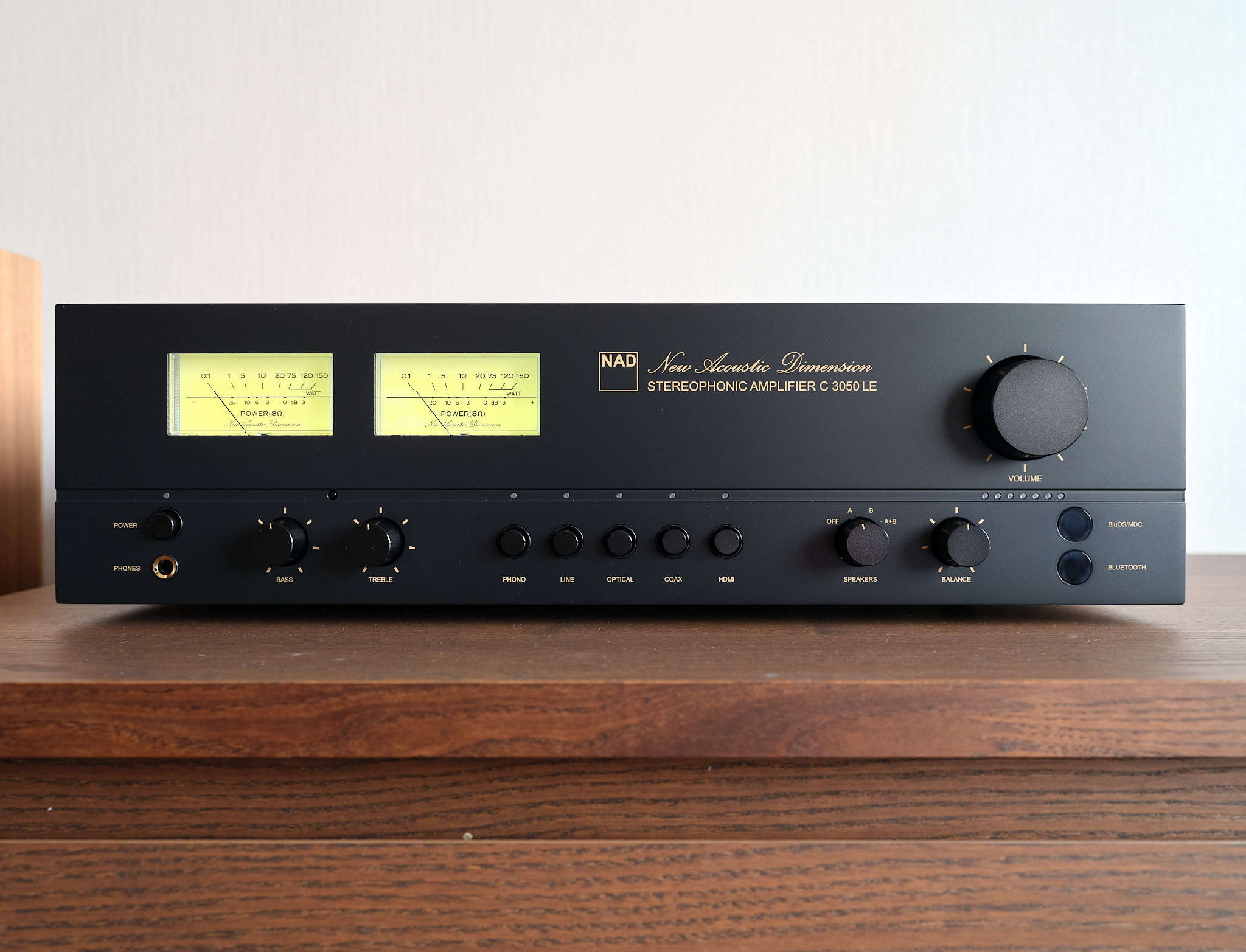
During my testing, I did come across something strange, which may or may not be by design. The balance knob on my C3050 LE does not appear to completely mute one side. With the knob turned all the way to the left speaker, there continues to be quite a bit of sound coming from the right speaker. It could be designed this way to provide more granular adjustment capability, or it could be a firmware issue. I’ve reported to NAD and will report back their response.
Conclusion
NAD has clearly scored a home run with the C3050 LE; it’s pretty much sold out everywhere around the world (Asia still has some units left in countries that don’t have a strong history with NAD) and there’s a queue forming for the non-LE version (won’t use real wood and will have BluOS as optional).
The amplifier looks stunning, has all the connectivity options you could want, has decent measurements, and uniquely in this price range, has Dirac Live Room Correction. To have all of this in a quiet, cool running and efficient amplifier is really a great way to celebrate NAD’s 50 years in business.
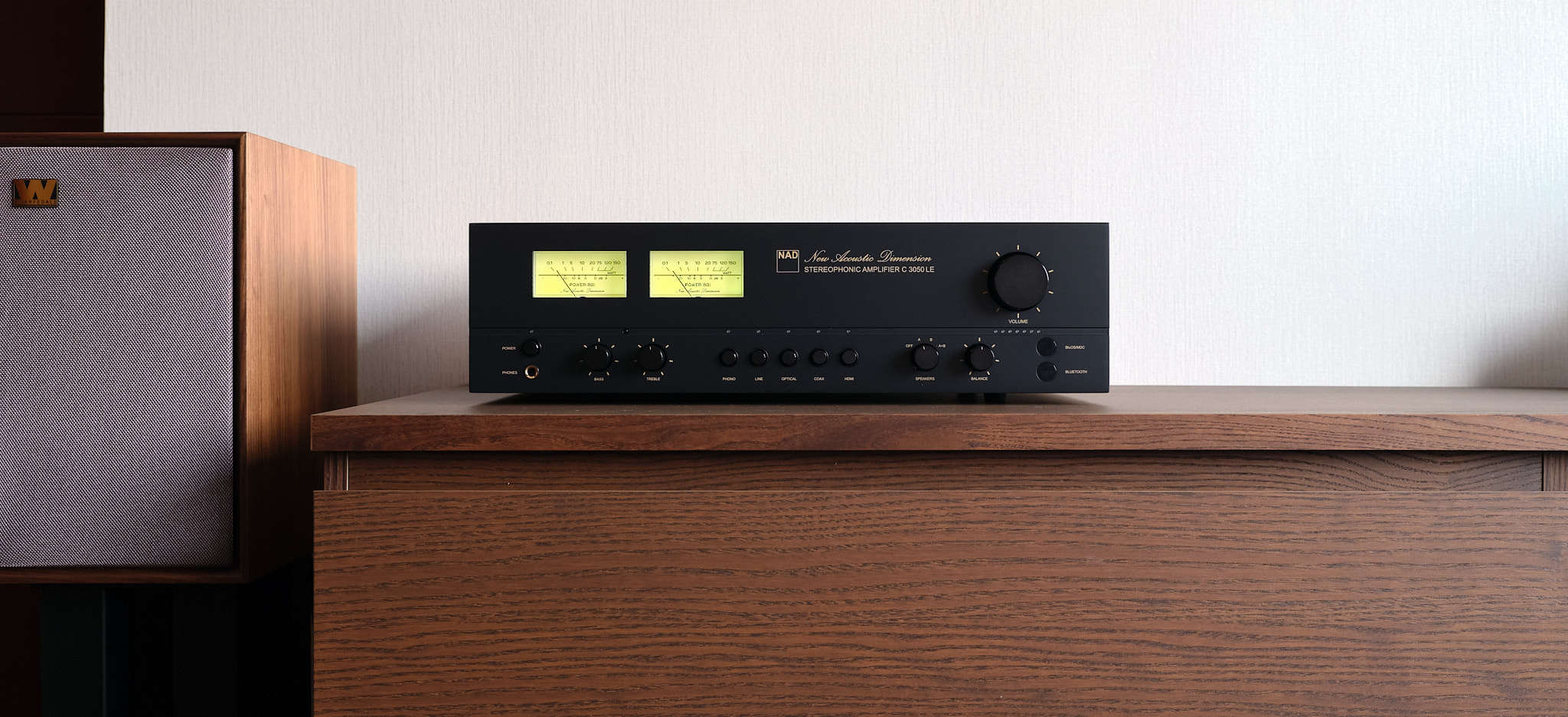
I hope we’ll see more of this design language come to other products. Imagine an M34 with aluminum, wood, touch screen and analogue VU meters! I can only dream and get my wallet ready! I hope you’ve enjoyed this review of the C3050 LE. It’s as remarkable amplifier that’s sure to provide years of enjoyment and a great talking and focal point for your room.
Pros:
- Unique and stunning combination of vintage (looks) and modern (internals)
- All in one device with an excellent balance of useful features (BluOS) and connectivity (HDMI, Airplay2, etc)
- Dirac Live Room Correction integrated into the amplifier
Cons:
- Limited Edition that’ss nearly sold out across the world – might have to settle for the non-LE version
- Objective testing has found that it lags behind some of the manufacturer’s specifications such as rated power and SNR
- Dirac Live setup is split from C3050 LE setup procedure which makes it confusing for first-time users
Are you thinking about getting a C3050 LE, or do you already have one? What do you think of it? Let me know your thoughts in the comments below.
Addendum: Dirac Live Room Correction
In this review, I didn’t touch much on Dirac Live. The reason is because I’m in the process of writing a full article on this amazing technology. Over the years, I’ve spent a lot of money on my home audio journey. By far, the biggest improvements in sound quality have come from areas that I didn’t expect:
- Room dimensions and materials
- Speakers and their placement
- Room correction technology
You’ll notice that amplifiers are not in the top three, nor are pre-amplifiers or DACs. The reality is that most of the electronics are a solved engineering problem. You can buy electronics that have no audible distortion or noise at relatively affordable price points. Our focus should therefore be on the room, speakers, their placement and room correction. Dirac Live has been the single best investment I’ve made in my home audio journey. I stayed away from DSP for a long time and feel foolish that I missed out on years of this level of excellent sound quality. More to come on this topic in a future post!
Discover more from fcracer - Travel & Photography
Subscribe to get the latest posts sent to your email.
Hi and nice review. About the front LED lights. You mention they can be turned off in the BluOS menu settings. Two questions about this:
1. Does this mean the BluOS module card is required to turn off the front LED lights?
2. Do the VU meter lights also go off when you turn off the front LED lights?
Thanks,
Scott
Hi Scott, I’ve only owned and reviewed the C3050LE version which includes the BluOS module from the factory. There are however two ways to reduce the brightness, one of which certainly doesn’t require the BluOS module.
You can use the sunburst button on the remote control to dim the lights. It’s button 8 on page 10 of the user manual which can be found here. There are six levels of brightness (all of which are too bright btw).
The VU Meters do not turn off with the other LED’s. They always remain lit.
¨The balance knob on my C3050 LE does not appear to completely mute one side. With the knob turned all the way to the left speaker, there continues to be quite a bit of sound coming from the right speaker¨
Hello, I also notice this on my device. Did you get any response from NAD??
Thanks
Hi Andres, thanks for writing in. When I contacted NAD with my findings for the balance knob and the incorrect VU meters, their support replied that they’ll pass on the feedback to their development team. Shortly after, the ticket was marked as “Resolved” and closed.
Not the greatest customer experience given that nothing had been resolved. Since I don’t use balance (Dirac Live calibration resolves any balance issues), I didn’t take any follow up action. I assume it will get resolved in a future firmware update, but I’m not holding my breath.
Hi again and thanks for the reply, also thanks for a nice review.
I have not given myself the time to setup the Dirac Live, but will do that this week.
I think I read somewhere that we dont get the full version here and that we still need to pay some extra 99 euros to get full Bandwidth License, correct? But I guess its worth it.
Hi Andres, there’s quite a bit of controversy whether it’s a good idea to use room correction above the Schroeder frequency (the frequency at which rooms transition from being resonators to being reflectors/diffusors). This is typically <200Hz, therefore, the provided free license which cuts off at <500Hz is more than sufficient.
In my living room, I have fairly neutral Monitor Audio Silver 6 speakers so I could get away with the free license. However, there's a bit of edge to my setup because I have many hard surfaces. Therefore, I prefer using the full license to tame some of the excess mid to high frequencies that my room exaggerates.
If you have neutral speakers, you won't notice much of a change with the full license. However, if you have severely non-linear speakers, you'll hear a dramatic improvement in the sound quality. The best investment you can make is to get a UMIK-1 from minidsp.com and learn how to use the excellent and (shockingly) free REW software. You'll learn so much about your room and system.
An interesting and informative review of the new NAD 3050
I am still using an upgraded version of the iconic 3020 with pair of Rogers LS3/5a speakers, Falcon drivers, Rega Planar 1 with a vintage Shure V15iii cartridge.
Still sounds great!
I’m getting on a bit now so not likely to upgrade present system. Started my hifi Journey in 1957 with Leak/Wharfedale and progressed from there. Had a Quad based system with electrostatic speakers, Garrard 301, SME arm and various m/c – m/m cartridges also had a Ferrograph reel to reel tape.
Very much enjoy your reviews
Best wishes
Hi Alan, thank you for writing in. It must be an incredible journey to have witnessed everything from reel to reel tape to today’s streaming services! I started my music journey on cassettes; my brother had a Sanyo stacked component system; I used to make remixes of songs by editing in different clips of songs.
It’s incredible to think about how far we’ve come; I can now do a 64 track mix using software without any special gear, and with training available on YouTube! No question we live in a more flexible world, but I do sometimes miss the tactility and simplicity of those times. Thanks again for taking the time to write in.